China has delayed the release of information on the coronavirus
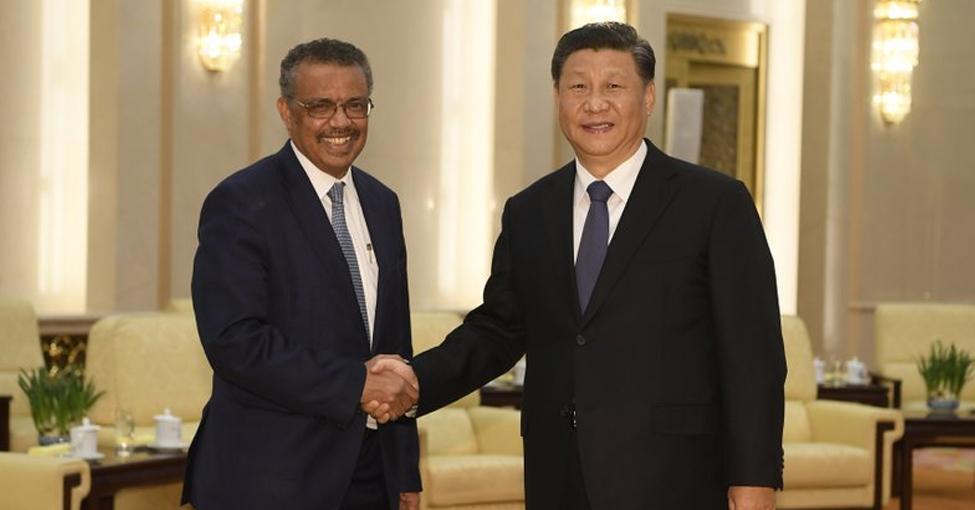
Throughout January, the World Health Organization publicly praised China for what it called a rapid response to the new coronavirus. He repeatedly thanked the Chinese government for sharing the genetic map of the virus "immediately" and said that his work and commitment to transparency was "very impressive and beyond words".
But behind the scenes, he discovered the Associated Press. it was a very different story: significant delays on the part of China and considerable frustration among WHO officials for not getting the information they needed to combat the spread of the deadly virus.
Despite public compliments, China actually "sat down" on the release of the genetic map - or genome - of the virus for more than a week, after three different government labs completely decoded the information. According to dozens of interviews and internal documents, the fault lay with strict controls on information and competition within the Chinese public health system.
Chinese government laboratories released the genome only after another laboratory published it, before authorities, on a virologist website on January 11. Even then, China stopped for at least another two weeks in providing WHO with detailed patient and case data, according to internal meeting records organized by the United Nations agency for health until January - all in a moment. where the epidemic could have slowed dramatically.
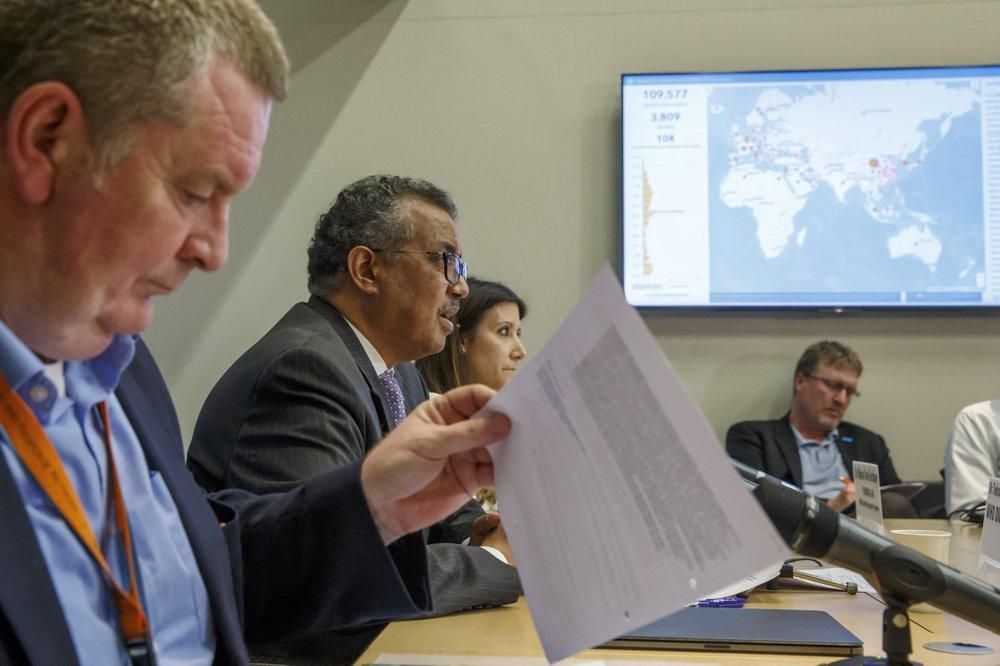
WHO director-general Tedros Ghebreyesus speaks during a news conference in Geneva in March. (Salvatore Di Nolfi / Keystone via AP)
WHO officials praised China in public because they wanted to get more information from the government, so the records obtained by the AP suggest. In private, they complained during the meetings of the week of January 6 that China did not share enough data to evaluate the effectiveness of the virus among people or the risk it posed for the rest of the world, costing precious time.
"We are going on very minimal information," said American epidemiologist Maria Van Kerkhove, now WHO technical director for COVID-19, in an internal meeting. "Clearly it is not enough for you to make adequate planning."
"We are currently at the stage where yes, they are giving it to us, 15 minutes before it appears on CCTV," said WHO chief official in China, Dr. Gauden Galea, referring to the Chinese central state television, in another meeting.
The story behind the first response to the virus comes at a time when the United Nations health agency is under harassment and accepted one independent investigation how the pandemic was managed globally. After repeatedly praising the Chinese response at the outset, U.S. President Donald Trump blew up the WHO in recent weeks for alleged collusion with China likely to hide the magnitude of the coronavirus crisis. Trump has cut ties with the organization on Friday, jeopardizing the approximately $ 450 million that the United States gives annually as the largest single donor to the WHO.
Meanwhile, Chinese President Xi Jinping has promised to pay $ 2 billion over the next two years to fight coronavirus, claiming that China has always provided information to the WHO and the world "in a timely manner".
The new information does not support the narrative of the United States or China, but instead portrays an agency now stuck in the middle, which was urgently trying to request more data despite limited authority. Although international law requires countries to report information that may have an impact on public health to the WHO, the United Nations agency does not have control powers and cannot independently investigate outbreaks within countries. Instead, it must rely on the cooperation of the Member States.
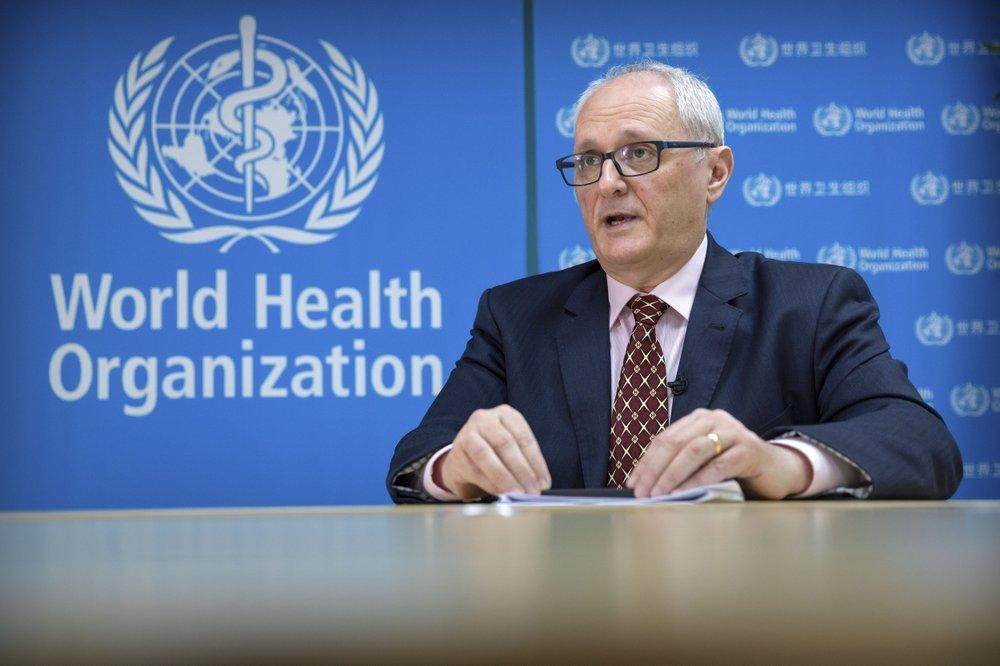
Dr. Gauden Galea, the World Health Organization representative in China, during an interview at the WHO offices in Beijing. (AP Photo / Mark Schiefelbein)
Records suggest that instead of colluding with China as Trump declared, WHO was itself kept in the dark, while China provided the minimum information required by law. However, the agency tried to portray China in the best light, probably as a means of getting more information. And WHO experts really thought that Chinese scientists had done "a great job" in detecting and decoding the virus, despite the lack of transparency by Chinese officials.
WHO staff discussed how to put pressure on China for gene sequences and detailed patient data without angering the authorities, worried about losing access and putting Chinese scientists in trouble. Under international law, WHO is required to quickly share information and warnings with member countries about an evolving crisis. Galea noted that the WHO could not indulge China's desire to approve the information before saying it to other countries because "this is not respectful of our responsibilities".
In the second week of January, WHO's chief of emergencies, Dr. Michael Ryan, told colleagues that it was time to "shift gears" and put more pressure on China, fearing a repeat of what happened in 2002 with the outbreak of severe acute respiratory syndrome which has killed nearly 800 people worldwide.
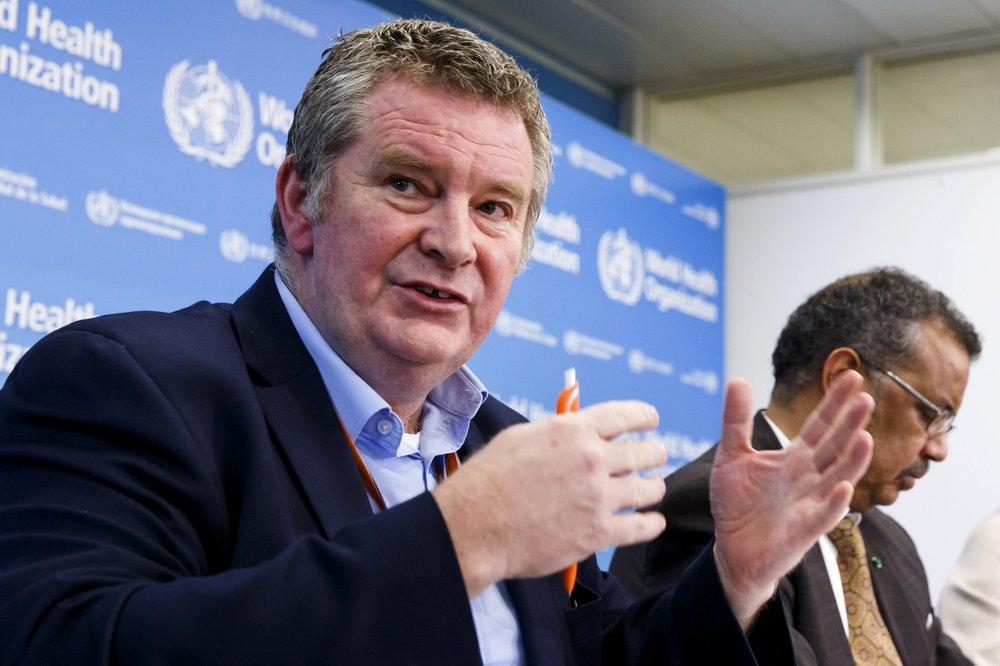
Michael Ryan, executive director of the World Health Organization's Health Emergencies program, at a news conference in Geneva. (Salvatore Di Nolfi / Keystone via AP)
"This is exactly the same scenario, we were constantly trying to get updates from China on what was going on," he said. "WHO has barely come out with its neck intact, given the problems of transparency in southern China."
Ryan said the best way to "protect China" from possible actions by other countries is for the WHO to do its own independent analysis with Chinese government data that the virus can easily spread among people. Ryan also noted that China did not cooperate in the same way as other countries in the past.
"This wouldn't have happened in the Congo and it wouldn't have happened in the Congo and other places," he said, probably referring to the Ebola epidemic that started there in 2018. "We have to see the data ... It's absolutely important at this point."
The delay in the release of the genome has blocked the recognition of its spread in other countries, together with the global development of tests, drugs and vaccines. The lack of detailed patient data also made it more difficult to determine how quickly the virus was spreading, a crucial issue in stopping it.
Between the day the full genome was first decoded by a government laboratory, January 2, and the day the WHO declared a global emergency on January 30, the outbreak spread with a factor of 100 to 200 times, according to i retrospective data of the infection provided by the Chinese Center for Disease Control and Prevention. The virus has now infected over 6 million people worldwide and killed over 375.000.
"It goes without saying that we could have saved more lives and avoided many, many deaths if China and WHO had acted faster," said Ali Mokdad, a professor at the Institute for Health Metrics and Assessment of the University of Washington.
However, Mokdad and other experts also noted that if the WHO had been more confrontational with China, it could have triggered a much worse situation and obtained no information.
If the WHO had pushed too hard, it could even have been kicked out of China, said Adam Kamradt-Scott, a professor of global health at the University of Sydney. But he added that a delay of a few days in the release of genetic sequences can be critical in an outbreak. And he noted that as Beijing's lack of transparency becomes clearer, the continued defense of China by WHO Director-General Tedros Adhanom Ghebreyesus is problematic.
"It has certainly damaged WHO's credibility," said Kamradt-Scott. “Has it gone too far? I think the evidence is clear ... it has led to so many questions about the relationship between China and WHO. It is perhaps a warning. "
WHO and its officials cited in this story have refused to answer questions posed by the Associated Press without audio or written transcripts of the recorded meetings, which the AP was unable to provide to protect its sources.
"Our leadership and staff worked day and night in compliance with the Organization's rules and regulations to support and share information with all Member States in the same way and engage in frank conversations with governments at all levels", affirmed a WHO statement.
The Chinese National Health Commission and the Ministry of Foreign Affairs have not commented. But in recent months, China has repeatedly defended its actions and many other countries, including the United States, they responded to the virus with even longer delays di settimane e even months.
"Since the outbreak began, we have continued to share information about the epidemic with the WHO and the international community in an open, transparent and accountable way," said Liu Mingzhu, an official from the International Department of the National Health Commission, in a press conference May 15th.
The race to find the genetic map of the virus began in late December, according to the story that takes place in WHO interviews, documents and records. It was then that Wuhan's doctors noticed mysterious groups of patients with fever and respiratory problems who were not getting better with the standard flu treatment. In search of answers, they sent test samples from patients to commercial labs.
By December 27, a laboratory, Vision Medicals, had assembled most of the genome of a new coronavirus with striking similarities to SARS. Vision Medicals shared its data with officials from Wuhan and the Chinese Academy of Medical Sciences, as first reported by Chinese financial publication Caixin and independently confirmed by the AP.
On December 30, Wuhan health officials released internal warnings about the unusual pneumonia that leaked on social media. That evening, Shi Zhengli, a coronavirus expert from the Wuhan Institute of Virology, famous for tracing the SARS virus in a bat cave, was warned of the new disease, according to an interview with Scientific American. Shi took the first train from a conference in Shanghai to return to Wuhan.
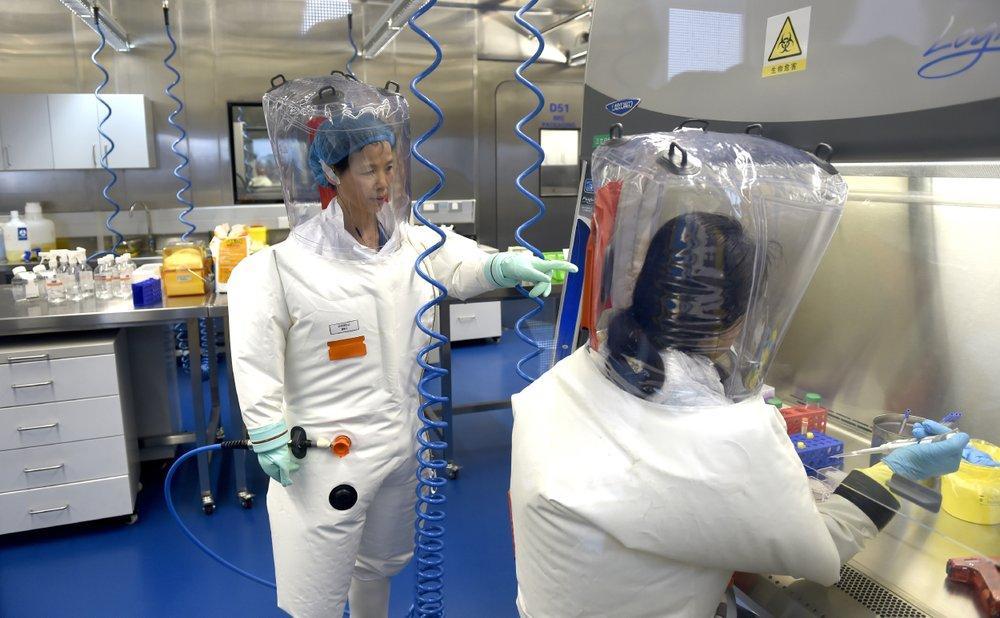
Shi Zhengli works with other researchers in a lab at the Wuhan Institute of Virology. (Chinatopix via AP)
The next day, the Chinese director of CDC Gao Fu sent a team of experts to Wuhan. Also on December 31, WHO first learned of the cases from an open source platform that searches for information on outbreaks, emergency chief Ryan said.
WHO officially requested more information on January 1st. Under international law, members have 24 to 48 hours to respond, and China reported two days later that there had been 44 cases and no deaths.
By January 2, Shi had decoded the entire genome of the virus, according to a warning later published in the your institution's website.
Scientists agree that Chinese scientists detected and sequenced the then unknown pathogen with surprising speed, testifying to China's significantly improved technical capabilities after SARS, during which a WHO-led team of scientists employed months to identify the virus. This time, Chinese virologists showed in a few days that it was a coronavirus never seen before. Tedros would later say that Beijing has defined "a new standard for responding to epidemics."
But when it came to sharing information with the world, things started to get worse.
On January 3, the National Health Commission issued a confidential notice ordering laboratories with the virus to destroy their samples or send them to designated institutions for safekeeping. The warning, first reported by Caixin and viewed by the AP, prohibited laboratories from posting on the virus without government authorization. The order prevented Shi's laboratory from publishing the genetic sequence or warning of the potential danger.
Chinese law states that research institutes cannot conduct experiments on new potentially dangerous viruses without the approval of the major health authorities. Although the law is intended to keep experiments safe, it does offer top health officials broad decision-making powers over what lower-level labs can or cannot do.
"If the virology community had operated more autonomously ... the public would have been informed long before the lethal risk of the new virus," said Edward Gu, professor at the University of Zhejiang and Li Lantian, a doctoral student at Northwestern University. , in an article published in March analyzing the epidemic.
Commission officials later repeated that they were trying to ensure the safety of the laboratory and had charged four separate government laboratories to identify the genome at the same time to obtain accurate and consistent results.
By January 3, the Chinese CDC had independently sequenced the virus, according to internal data seen by the Associated Press. And shortly after midnight on January 5, a third designated government laboratory, the Chinese Academy of Medical Sciences, had decoded the sequence and presented a report - pulling all night owls to get results in record time, according to an interview released by the media . (!)
Yet even with complete sequences decoded independently of three state laboratories, Chinese health officials have remained silent. The WHO reported on Twitter that investigations were underway into an unusual group of deathless pneumonia cases in Wuhan and said it would share "more details as we have them."
Meanwhile, gaps in the coronavirus experience have proven to be a problem at the Chinese CDC.
For almost two weeks, Wuhan did not report any new infections, while officials censored doctors who warned of suspicious cases. Meanwhile, researchers had discovered that the new coronavirus used a distinct spike protein to bind to human cells. The unusual protein and lack of new cases led some Chinese CDC researchers to think that the virus did not spread easily among humans - such as the coronavirus that causes Middle East respiratory syndrome, or MERS, according to an employee who he refused to be identified for fear of punishment.
Li Yize, a University of Pennsylvania coronavirus researcher, said he immediately suspected the pathogen was contagious when he discovered a leaked copy of a sequencing report in a group chat about a SARS-like coronavirus. But the Chinese CDC team working on the genetic sequence lacked molecular specialists and failed to consult external scientists, Li said. Chinese health authorities have rejected offers of assistance from foreign experts, including Hong Kong scientists excluded from a fact-finding mission in Wuhan and an American professor at a university in China.
On January 5, the Shanghai Public Clinical Health Center, led by the famous virologist Zhang Yongzhen, was the last to sequence the virus. He sent it to the GenBank database, where it was waiting to be reviewed, and notified it to the National Health Commission. He warned them that the new virus was similar to SARS and probably infectious.
"It should be contagious through the respiratory tract," the center said in an internal notice, seen by the AP. "We recommend taking preventive measures in public areas."
On the same day, WHO stated that, based on preliminary information from China, there was no evidence of significant transmission between humans and did not recommend any specific measures for travelers.
The following day, the Chinese CDC raised the emergency level to the second highest. The staff proceeded to isolate the virus, draft guidelines for laboratory tests, and design test kits. But the agency had no authority to issue public notices and the high emergency level was also kept secret by many of its staff.
By January 7, another team at Wuhan University he sequenced the pathogen and found that it matched Shi's, assuring Shi that he had identified a new coronavirus. But Chinese CDC experts said they didn't trust Shi's findings and needed to verify his data before he could publish, according to three people who were familiar with the matter. Both the National Health Commission and the Ministry of Science and Technology, which oversees Shi's laboratory, have refused to make Shi available for an interview.
An important factor behind the gag order, some say, was that Chinese CDC researchers wanted to publish their articles first. "They wanted to take all the credit," said Li, the coronavirus expert.
Internally, the leadership of the Chinese CDC is plagued by fierce competition, explain six people familiar with the system. They said the agency has long promoted staff based on how many documents they can publish in prestigious journals, making scientists reluctant to share the data.
As the days passed, some Chinese CDC staff members also began to wonder why the authorities were taking so long to identify the pathogen.
"We were becoming suspicious because sequencing would result within a day or two," said a lab technician, refusing to be identified for fear of punishment.
On January 8th, the Wall Street Journal they reported that scientists had identified a new coronavirus in samples of pneumonia patients in Wuhan, anticipating and embarrassing Chinese officials. The lab technician told AP that he first learned about the discovery of the virus from the Journal.
The article also embarrassed WHO officials. Dr. Tom Grein, head of the WHO acute event management team, said the agency looked "doubly, incredibly stupid". Van Kerkhove, the American expert, acknowledged that the WHO was "already late" in the announcement of the new virus and told colleagues that it was essential to push China.
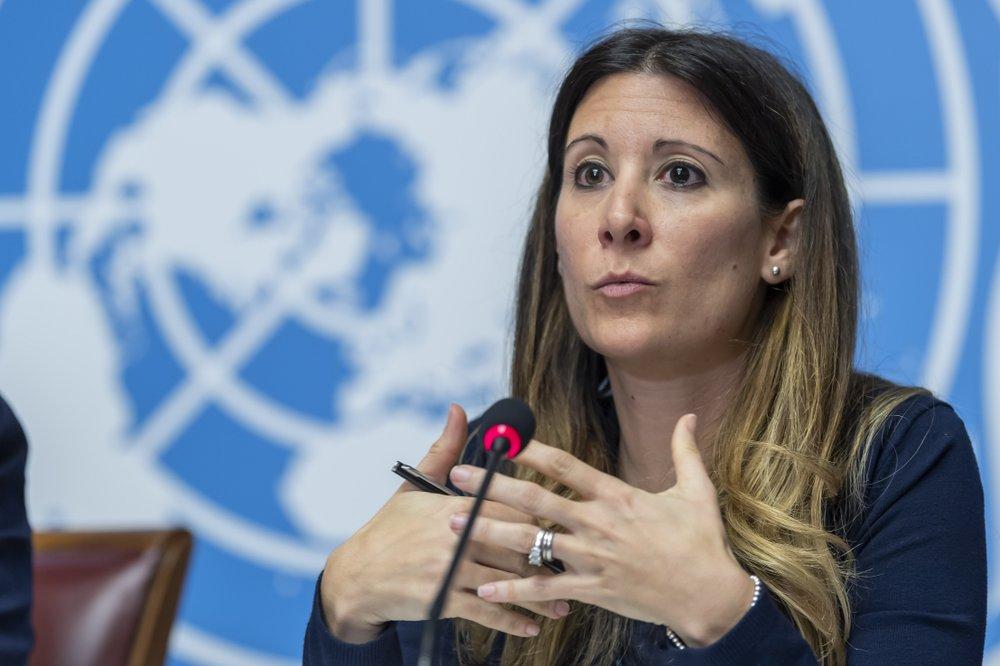
Maria van Kerkhove, head of the Outbreak Investigation Task Force for the World Health Organization, at a news conference in Geneva. (Martial Trezzini / Keystone via AP)
Ryan, the WHO chief of emergencies, was also troubled by the scarcity of information.
"The fact is that there are two to three weeks to an event, we don't have a laboratory diagnosis, we don't have an age, gender or geographic distribution, we don't have an epi curve," he complained, referring to the graph epidemic standards that scientists use to show how an epidemic is progressing.
After the article, state media officially announced the discovery of the new coronavirus. But even then, Chinese health authorities did not release the genome, diagnostic tests, or detailed patient data that could suggest how contagious the disease was.
At that time, suspicious cases had already appeared across the region.
On January 8, Thai airport officials snatched a woman from Wuhan with a runny nose, sore throat and high fever. The team of Professor Supaporn Wacharapluesadee of Chulalongkorn University found that the woman had been infected with a new coronavirus, just as described by Chinese officials. Supaporn partially understood the genetic sequence by January 9, reported it to the Thai government and spent the next day looking for matching sequences.
But since the Chinese authorities had not published any sequence, it found nothing. He could not prove that the Thai virus was the same that sickened people in Wuhan.
"It was a bit of a wait and see when China will release the data so we can compare it," said Supaporn.
On January 9, a 61-year-old man with the virus died in Wuhan - the first known death. Death was not made public until January 11th.
WHO officials complained during internal meetings that they made repeated requests for additional data, especially to find out if the virus could spread efficiently among humans, but to no avail.
"We have requested further epidemiological information informally and formally," said the Chinese representative of WHO Galea. "But when we asked for details, we couldn't get anything."
Emergency chief Ryan complained that because China was providing the minimum information required by international law, WHO could not do much. But he also noted that last September, the WHO had issued an unusual public rebuke from Tanzania for not providing enough detail about a worrying Ebola outbreak.
"We have to be consistent," said Ryan. "The danger now is that, despite our good intentions ... especially if something happens, the WHO will be pointed out."
Ryan noted that China could make a "huge contribution" to the world by immediately sharing the genetic material, because otherwise "other countries will have to reinvent the wheel in the coming days."
On January 11, a team led by Zhang from the Shanghai Public Health Clinic finally published a sequence on virological.org, used by researchers to exchange tips on pathogens. The move angered the Chinese officials of the CDC, said three people who were familiar with the matter, and the following day his laboratory was temporarily closed by the health authorities.
Zhang made a request for comment to the Chinese CDC. The National Health Commission, which oversees the Chinese CDC, has repeatedly refused to make its officials available for interviews and has not answered questions about Zhang.
Supaporn then compared her sequence to Zhang's and found that it was a 100% match, confirming that the Thai patient was ill with the same virus found in Wuhan. Another Thai laboratory achieved the same results. Thailand informed WHO that day, said Tanarak Plipat, deputy director general of the Department of Disease Control at the Thai Ministry of Public Health.
After Zhang released the genome, the Chinese CDC, the Wuhan Institute of Virology and the Chinese Academy of Medical Sciences ran to publish their sequences, working overnight to review them, collect patient data and send it to National Health Commission for approval, according to documentation obtained from the AP.
On January 12, the three labs together finally released the sequences on GISAID, a platform that allows scientists to share genomic data.
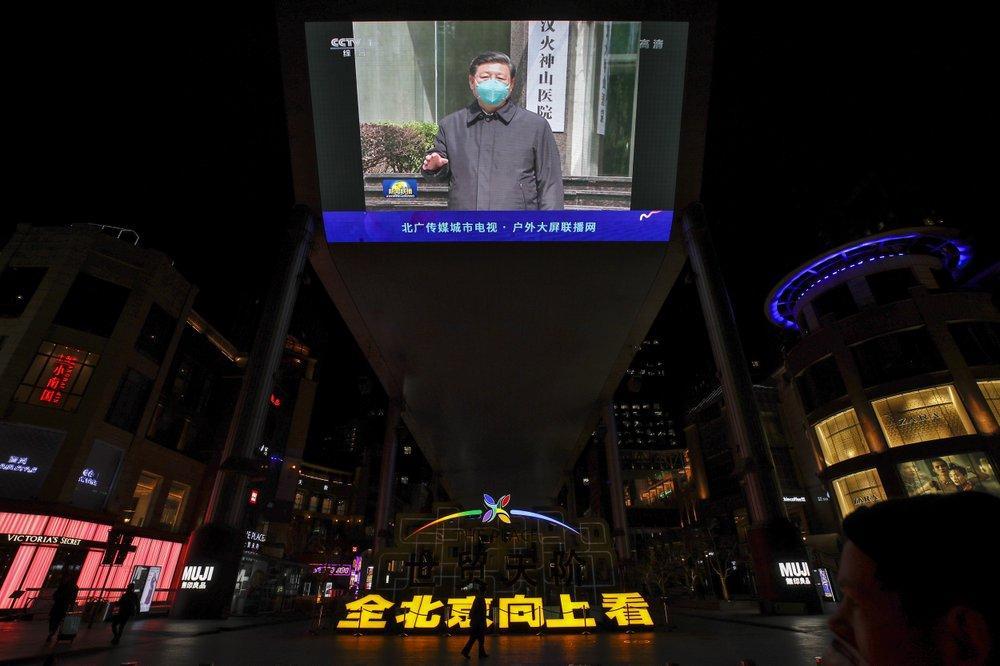
A giant TV screen at a quiet shopping mall in Beijing shows President Xi Jinping talking to medical workers at the Huoshenshan Hospital in Wuhan in March. (AP Photo / Andy Wong)
More than two weeks had passed since Vision Medicals decoded a partial sequence and more than a week since the three government laboratories had obtained complete sequences. About 600 people were infected that week, an increase of about three times.
Some scientists argue that the wait was not unreasonable considering the difficulties in sequencing unknown pathogens, as precision is as important as speed. They point to the SARS epidemic in 2003 when some Chinese scientists initially - and erroneously - believed that the source of the epidemic was chlamydia.
"The pressure is intense in a blast to make sure you're right," said Peter Daszak, president of the EcoHealthAlliance in New York. "It's actually worse to go out to go to the public with a story that is wrong because the public completely loses faith in the public health response."
However, others ask what happened behind the scenes.
Infectious disease expert John Mackenzie, who served on a WHO emergency committee during the outbreak, praised the speed of Chinese researchers in sequencing the virus. But he said that once the central authorities were involved, the detailed data ended up in a scan.
"Certainly there was a kind of empty period," said Mackenzie. “There had to be a man-to-man transmission. You know, he's staring at you ... I thought they would have been much more open at that point. "
On January 13, WHO announced that Thailand had a confirmed case of the virus, shaking Chinese officials.
The next day, in a confidential teleconference, the main Chinese health official ordered the country to prepare for a pandemic, calling the epidemic the "most serious challenge from SARS in 2003", as previously reported by the AP. Chinese CDC staff across the country began screening, isolating and testing cases, presenting hundreds of them across the country.
Yet even though the Chinese CDC internally declared a level one emergency, the highest possible level, Chinese officials still claimed that the possibility of prolonged transmission between humans was low.
WHO has gone back and forth. Van Kerkhove said in a press conference that "it is certainly possible that there is a limited human-to-human transmission." But hours later, the WHO seemed to be going back and it has tweeted that "preliminary investigations conducted by the Chinese authorities have not found clear evidence of human-to-human transmission" - a statement that later became fodder for critics.
A senior official in the WHO office in Asia, dr. Liu Yunguo, who attended Wuhan medical school, flew to Beijing to establish direct and informal contacts with Chinese officials, a show of recordings. Liu's ex-classmate, a Wuhan physician, warned him that pneumonia patients were flooding the city's hospitals, and Liu pushed other experts to visit Wuhan, according to a public health expert who is familiar with with the matter.
On January 20, the leader of a team of experts returning from Wuhan, the well-known government infectious disease doctor Zhong Nanshan, publicly stated for the first time that the new virus was spreading among people. Chinese President Xi Jinping called for the "timely publication of information on the epidemic and the deepening of international cooperation".
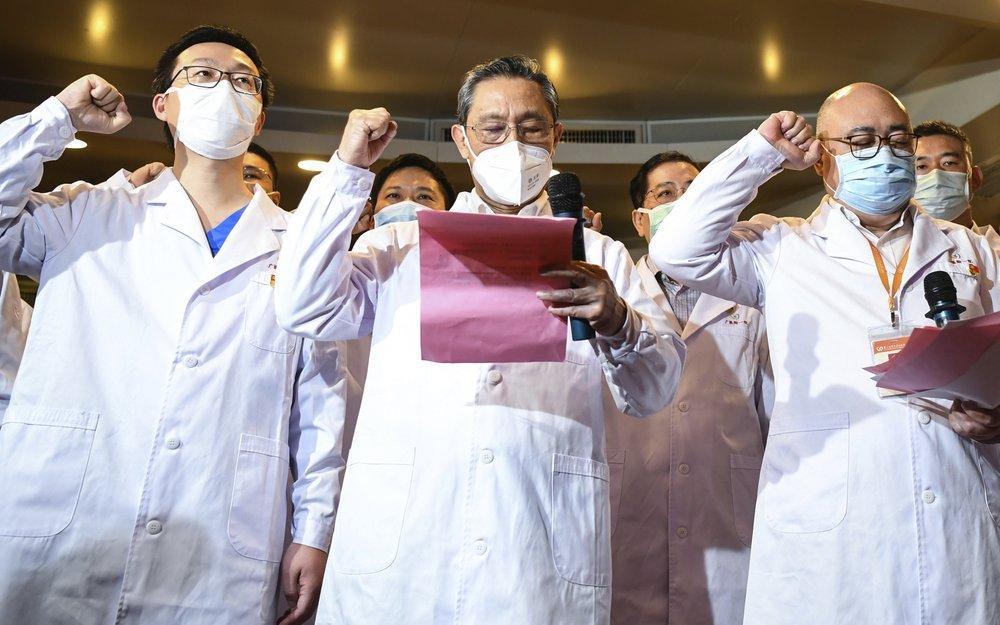
Respiratory specialist Zhong Nanshan attends an oath-taking ceremony via video connections for two new probationary Communist Party members in Wuhan. (Deng Hua / Xinhua via AP)
Despite this directive, WHO staff still had difficulty obtaining sufficient and detailed patient data from China about the rapidly evolving epidemic. On the same day, the United Nations health agency sent a small team to Wuhan for two days, including Galea, the WHO representative in China.
He was told of a troubling group of cases among more than a dozen doctors and nurses. But they had no "transmission trees" that described in detail how the cases were connected, nor a full understanding of the spread of the virus and who was at risk.
At an internal meeting, Galea stated that their Chinese counterparts "speak openly and consistently" about the human-to-human transmission and that it was debated whether or not this was supported. Galea reported to colleagues in Geneva and Manila that China's key request to the WHO was for help "in communicate this to the public, without causing panic. "
On January 22, WHO convened an independent committee to determine whether to declare a global health emergency. After two inconclusive meetings in which the experts were divided, they decided not - although Chinese officials did they ordered Wuhan to be sealed in the biggest quarantine in history. The next day, WHO chief Tedros publicly described the spread of the new coronavirus in China as "limited".
For days, China did not release much detailed data, even though its case count had exploded. Beijing city officials were alarmed enough to consider blocking the capital, according to a medical expert with direct knowledge of the matter.
On January 28, Tedros and top experts, including Ryan, did an extraordinary trip to Beijing to meet President Xi and other senior Chinese officials. It is very unusual for the WHO Director-General to intervene directly in the practical aspects of outbreak investigations. Tedros' staff had prepared a list of inquiries.
"It could all happen, the doors open, or there is no communication," Grein said in an internal meeting while his boss was in Beijing. "We'll see."
At the end of Tedros' trip, WHO announced that China had agreed to host an international team of experts. In a press conference on January 29, Tedros then praised China, calling his level of commitment "incredible".
The next day, the WHO finally declared an international health emergency. Once again, Tedros thanked China, without saying anything about the previous lack of cooperation.
"We should express our respect and gratitude to China for what it is doing," said Tedros. "He has already done incredible things to limit the transmission of the virus to other countries."

